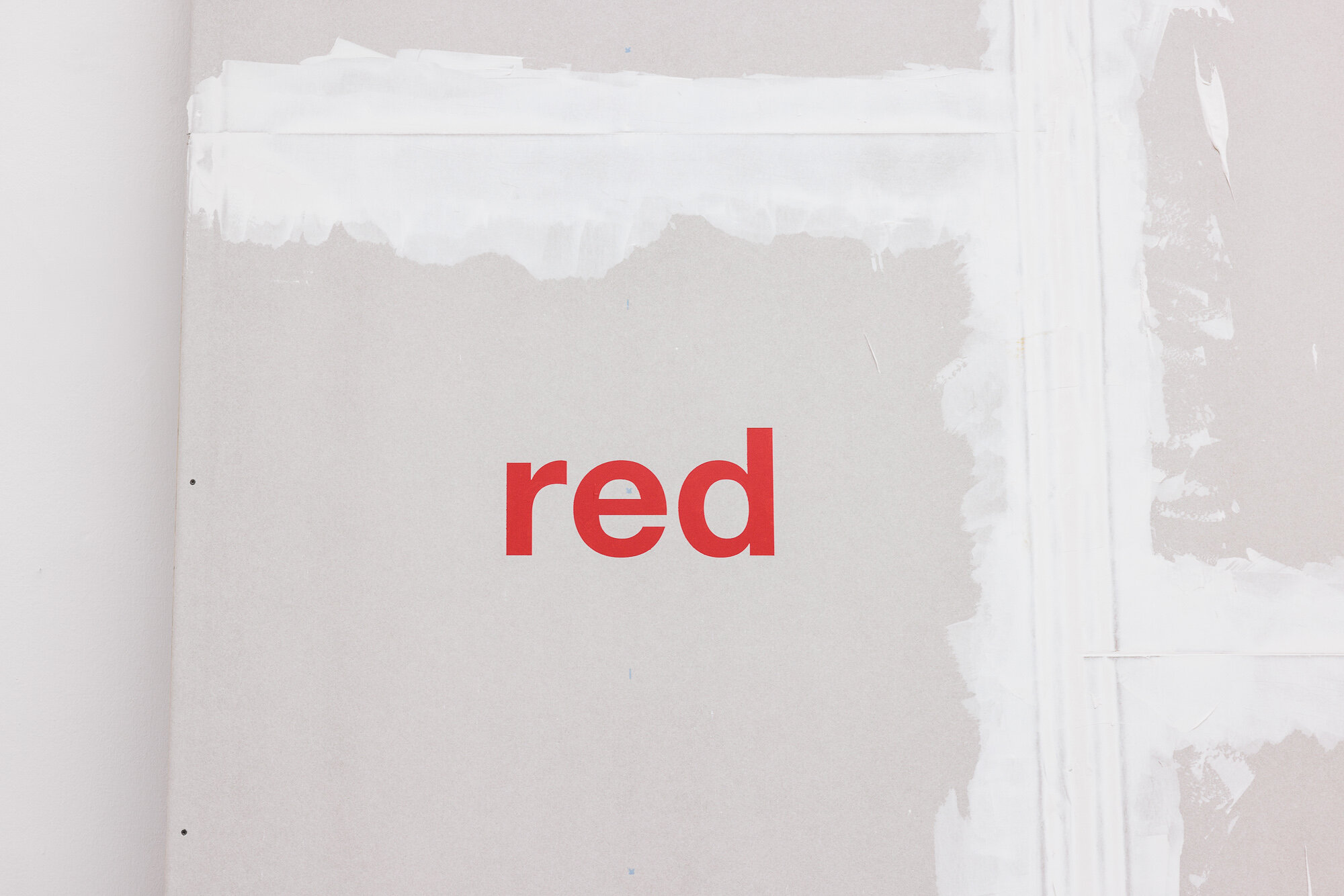red, 2022/23

A similar mechanism underlies the work red (2022 – 23), which is on the opposite wall. Although the plaster boards were simply mounted onto a wooden frame and then grouted, the lines of grouting on them can only be seen to be a painterly gesture in artistic terms. The arrangement of these boards with their regular pattern and monumental size of five meters is reminiscent of American and American-inspired painting of the second half of the last century. Different variants of the medium in a way obscure our view of this form, which we might easily encounter in our everyday lives, as grouting plasterboards is standard practice in drywall construction as well in the making of partition walls in the museum context. But here this gesture is always read first and foremost as artistic, a reading which is reinforced by the carmine red word “red” that also creates ambiguous points of reference — through the mere naming of a color. In a way, Dunst here is demonstrating how allegedly deep and meaningful content can be created with the simplest of means within the institutional setting, as beholders bring with them their own prior knowledge of codes and references that they then apply almost automatically.
red, 2022/23
Sheetrock grouted, mounted on frame, with applied text (stencil)
500 × 315 × 8 cm
Courtesy Galerie nächst St. Stephan Rosemarie Schwarzwälder, Vienna
Heinrich Dunst
Among many others we allow us to highlight following shows: nächst St. Stephan Rosemarie Schwarzwälder, Vienna (2019, 2013), House of Art, České Budějovice (2018), KOW, Berlin (2016, 2014), Kunstverein Schwaz (2015), Ludwig Forum, Aachen (2015), Kunsthalle Wien, Vienna (2014) and Secession, Vienna (2014).